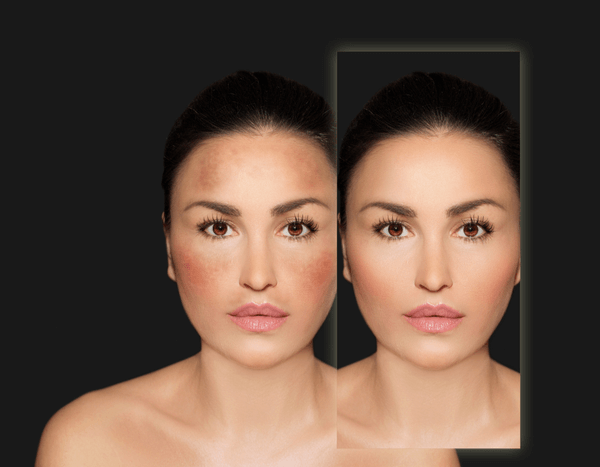How to Treat Hyper-Pigmentation

Skin hyperpigmentation is the condition characterised by dark patches on the skin.
The dark spots can cover only a small portion, but in other cases, it can spread all over the body. While hyperpigmentation barely poses any health risks, it indicates the presence of an underlying medical issue.
Melasma vs Sunspots
Melasma is known to be caused by disruption of the hormonal system and occurs mostly during pregnancy. Colouration occurs on the face and abdominal part, albeit it can also affect other parts of the body. On the other hand, sunspots, also known as solar lentigines, is the most common form of skin pigmentation. As the name suggests, it is caused by increased exposure to the sun's UV rays.
Causes of Hyperpigmentation
One of the common causes of skin coloration is excess melanin production. Melanin is the pigment responsible for our skin tone. Cells called melanocytes produce it. Several physiological and external factors may cause melanocytes to produce melanin abnormally.
According to a survey by the University Of New Mexico Cancer Centre, some treatment processes may pose a high risk of developing skin hyperpigmentation. For instance, chemotherapy medicines, used for cancer treatment, can cause pigmentation.
Hormonal changes due to pregnancy are also known to increase women's prevalence to exhibit skin condition. Other individuals have reported increased melanin production because of the Addison's disease, an endocrine condition.
Effective Ways of Treating Skin Hyperpigmentation
Having understood the critical information about the types of skin colouration and the causes, noticing the problem is straight-forward. Always consult Dermatology Consultants of Frisco to treat the condition. Here some viable treatment options.
Microdermabrasion
During microdermabrasion, the uppermost layer of the dermis is carefully removed in the bid of removing any sunspots, dark patches and other tinges of pigmentation. There are different approaches a doctor can take to treat sunspots. One effective method is DermaSweep. Anti-pigmentation chemicals are infused in the skin to inhibit melanin production. Resultantly, the skin maintains brightness.
Intense Pulse Light (IPL)
This is an effective way of treating skin darkening caused by exposure to the sun. It involves the use of light energy which is radiated into the skin which increases circulation in the blood vessels. IPL works to remove the discoloured spot by lifting the excess melanin. The treated areas usually turn dark as healing takes place but "peels" off after some time. At times, several laser treatments are performed before an IPL to ensure client satisfaction.
Salicylic Acid
Salicylic is a skin acid that accelerates the exfoliation of the skin's top layer. That stimulates the production of new cells that replace the old cells. The process results in an even and smooth skin complexion. Most face acids are available Over the Counter (OTC) and in cosmetic stores. They include azelaic acid, I-ascorbic acid (Vitamin C), kojic acid among others.
Fraction Laser Resurfacing
This approach works intensively to reverse severe skin discoloration. Since its discovery, fractional laser resurfacing has produced tremendous results. The procedure uses laser beams that cause micro-injuries in the skin to bring out the skin's natural healing power. A new skin layer develops following the removal of discoloration leaving the new layer sparkling. Some lasers used in FLR include Clear, Brilliant, Halo, Fraxel.
While it is essential to understand the different treatment options for skin discoloration, it is critical to avoid high-energy sun rays. Always wear a sunscreen when you expose your skin to bright light.

